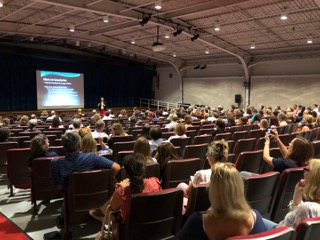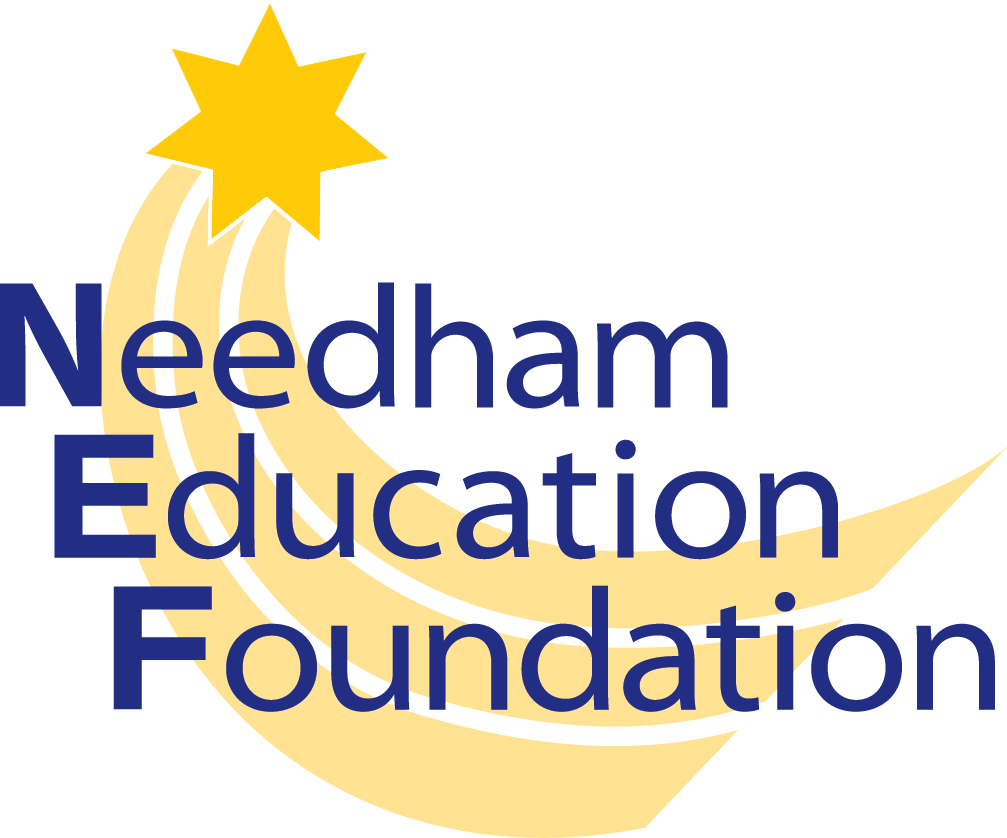Hispanic Literacy Expansion
Students at High Rock have benefited from the expansion of Spanish-language and Latino-experience literature at the High Rock library. With funds from a Spring 2019 NEF grant, Spanish language learners can read authentic language materials targeted to their language level. In addition, the grant has provided grade level literature for native Spanish speakers.
Assistant Principal Maggie Charron commented, “Our goal for the Spanish program is to foster biliteracy,” and the literature collection afforded by this grant contributes to this goal. She continues to say, “Being biliterate can increase multicultural understanding, ….. and can increase a student’s ability to communicate with others.”
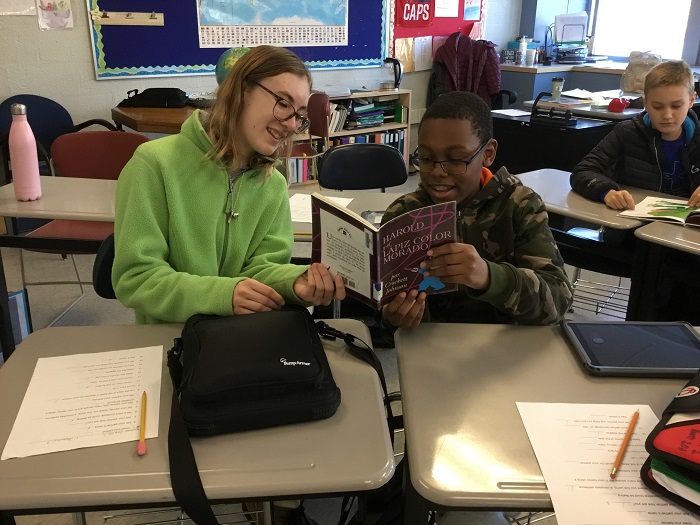
Pedometers for Movement, Math, and More!
This Fall 2019 grant was awarded at Broadmeadow to incorporate pedometers into the school day for all 2nd graders. Students will use the data from the pedometers for understanding math and distance concepts.
Exploring Robotics
Through a Spring 2019 NEF Grant, several robots were ordered for teachers and students at High Rock to explore in order to determine how they could fit into future curriculum. In the fall, a Robot Exploration Day was held for all staff at High Rock and technology specialists from across the district. Many ideas surfaced that day, including the integration of the robots into math, science, music, and social/emotional learning curriculum. Students were introduced to the robots in small groups.
After lots of exploration by teachers, administrators, and students, the Sphero Bolt and Root were determined to be most useful in the Middle School classroom.
The Sphero Bolt is easily connected to the coding curriculum at High Rock and teachers noted that they can see it being used in the math curriculum (angles and graphing) and the science curriculum (waves, graphing, and sensing). The Sphero also comes with pre-made lessons connecting the Social Studies units on Egypt and Hieroglyphics to coding!
The Root is an all-around robot that works nicely with the coding curriculum, but can be used in other areas such as music, art, science, and even ELA. This robot offers 3 levels of coding, making it useful for both beginners and advanced users.
The existing robots will continue to impact students in small groups and after school, and will be available to be checked out by technology specialists at other schools. At High Rock, they plan to recommend the district purchase a class set of the Sphero Bolt, and to begin integration of the robots into the curriculum starting in the fall.
Grant recipient Erin Mack noted, “Teachers were inspired to think outside of the box while exploring these robots and I can’t wait to see what they can do once a class set is purchased.” During the exploration day a teacher reflected, “I liked the fact that it could be controlled manually or by coding and could be used to create artwork.”
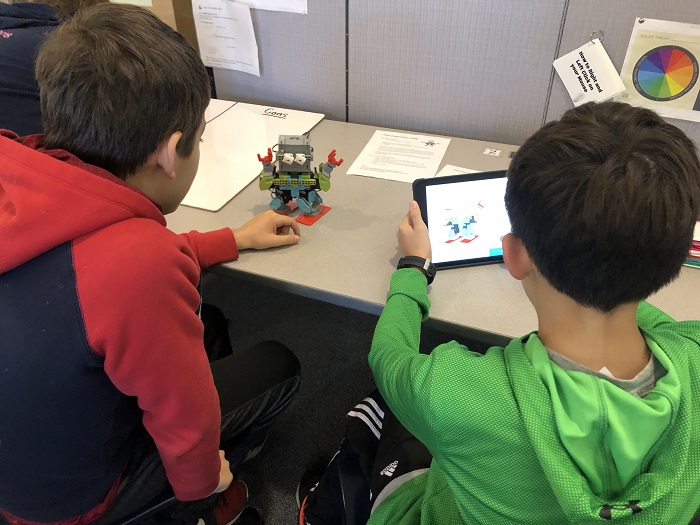
Far From The Tree – Film Screening and Panel Discussion
Funded by a small grant from the NEF last spring, the Far From a Tree screening was held on November 6th at Mitchell Elementary School. There was a great turn out for the event and attendees found the panel discussion thoughtful and informative.
The panelists included Tracy McKay, Liza d’Hemecourt, Laurie Davis and Sarah Burton.
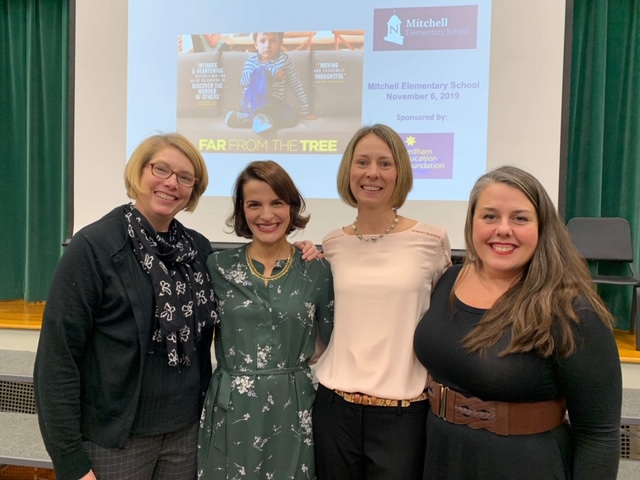

Low-Ropes Challenge Course at Pollard
Funded by a large grant from the NEF, the Low-Ropes Challenge Course at Pollard features seven elements presenting meaningful physical and mental challenges to help students develop social and emotional skills.
Grant writer, Michael Marcojohn is excited to see this grant come to life. He wrote, “I have always had the dream to build a course and provide students with the same positive experience I once had. I cannot wait to provide students with such a different and unique experience. Students have been asking me since the first day of school about when they will be allowed to enjoy the course.”
On October 3, Pollard teachers were trained and certified on the low-ropes course. Students at Pollard will now be able to use the course to help create an inclusive and cooperative team atmosphere.
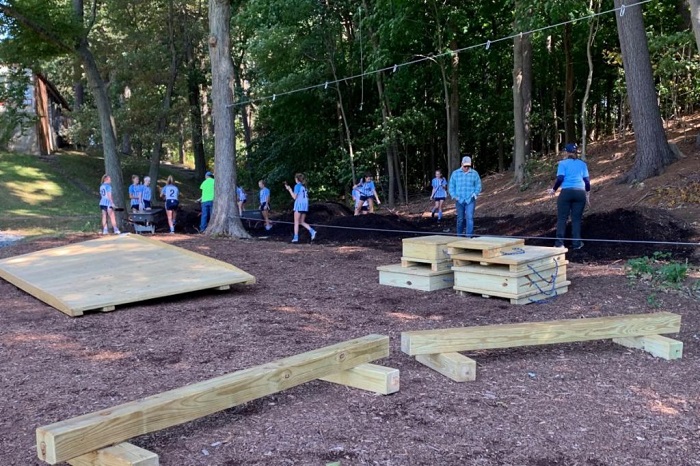
Sensory Pathways at Broadmeadow
The NEF funded two Sensory Pathways that were installed this month at Broadmeadow and they have already made a huge impact on the students and teachers, who were instantly mesmerized. These Sensory Pathways have given students opportunities to get their movement out.
The paths are located in the first-grade wing for the kindergarten, first and second graders to use, as well as on the ground level near the occupational therapy room. Each path is designed to change a child’s body position as he/she completes the course, focusing on academic visuals while moving the body in a specific order. By jumping, bouncing, bending, pushing, and breathing, students release their energy and sensory build-ups that impacts their ability to best utilize their brains.
Although teachers were initially worried about sending students to the paths independently, after a class lesson, they gave it a try. Teachers were pleasantly surprised at how responsible students were being when they asked to go on a sensory break. Broadmeadow families have enjoyed the videos shared by Principal Gaberman shared the videos in the school’s bulletin. Grant writer, Saundra Watson noted, “It has been amazing to see so many students reading the directions and following the movements and others following along by creating their own movements.”
Take a sneak peak at how Needham students are moving their bodies and putting the pathways to good use. Thank you to grant writer Saundra Watson for making this innovative grant come to life.
Rubik’s Cubes at Needham High School
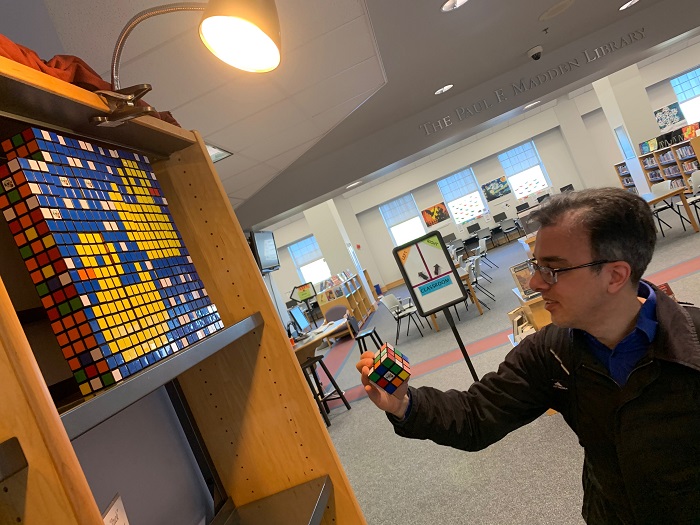
Talking Books
Kindergarten and first grade teachers have checked these out to use as listening centers in the classroom. Newly enrolled ELL students have been enjoying them outside the library as well.
One exciting effect of the Vox books is that they ignite interest in the regular print collection. Students often want to check out the regular print copy of the book they have just listened to. The Vox books have expanded interest in new topics that students may otherwise have overlooked. The Vox books also increase student independence. Everyone who listens to a Vox book can fully access a text even if they are not yet reading. Students are able to comprehend and retell a story after listening to it.
Grant writer Elizabeth Hitron, Hillside School Librarian, said, “As a librarian, it has been so heartening to see students engage so deeply with a new material that does not involve a screen! High quality narration and high quality literature are so captivating for a young audience. I love when the students walk into the library and ask, “Can we listen to the talking books today?”
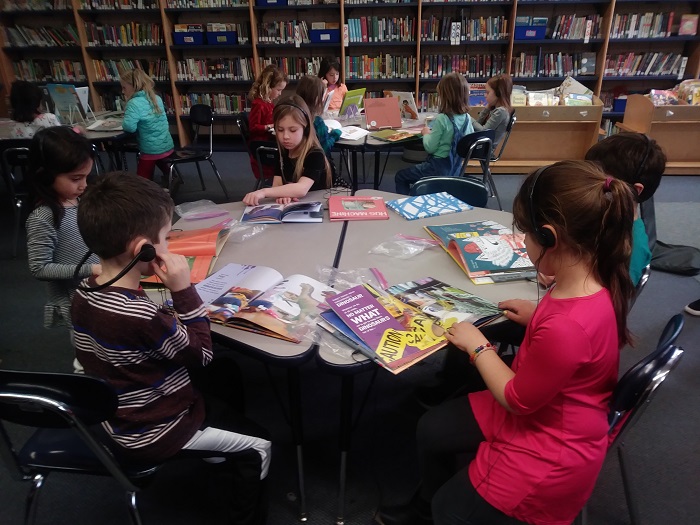
Fourth Grade Flexible Seating
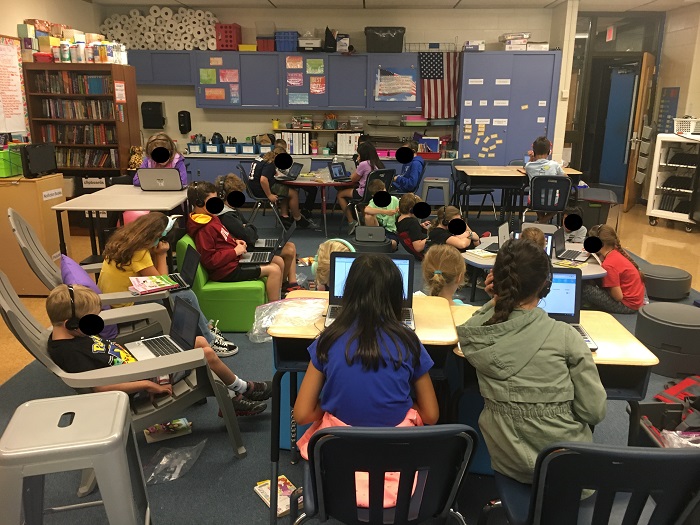
Dr. Jill Walsh Presents to Parents at Pollard on Topic of Social Media
On Tuesday, September 11, Dr. Jill Walsh, BU Sociologist and expert on adolescent social media use, gave a talk to over 200 Needham parents, entitled “The Good, the Bad and the Confusing: Today’s Teen Technology Landscape.“ The talk, sponsored by both the NEF and the High Rock-Pollard PTC, was the first of a two-part series that Dr. Walsh is presenting to Needham parents. The Needham Times wrote an article summarizing some of Dr. Walsh’s takeaways regarding social media’s effects on academics and a few strategies for parents. Do you want even more great tips? Dr. Walsh will share more strategies parents can use at the next lecture “Practical Strategies to Help Your Teen Thrive in the Digital World“ on October 29 from 7-8:15pm at Pollard.
Dr. Walsh has also been working with Pollard teachers and students as part of a grant written by Needham parents Carolyn Guttilla and Martha Cohen Barrett and funded by the NEF, entitled “Improving Digital Communication: Helping Pollard Students Better Understand How Social Media Communication Can Be Misinterpreted.” In the parent lecture, Dr. Walsh shared a lot of important information about teen technology use and discussed how parents can be more aware of and involved in what their teens are doing online. The talk was very well received; many parents shared that Dr. Walsh gave them a new way of looking at the technology landscape and a “reframe” for talking to their children about it. Dr. Walsh’s second parent lecture will be held on October 29 and will address technology and mental health. For more information about Dr. Walsh, check out her website at www.drjillwalsh.com. Dr. Jill Walsh, a Boston University professor, is working with the Pollard Middle School to help students better navigate the world of social media.
Here is a copy of the slides used during Dr. Walsh’s presentation.
